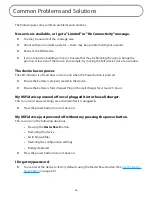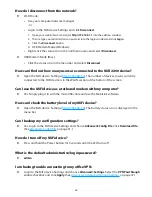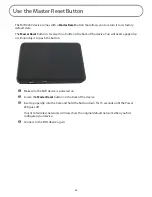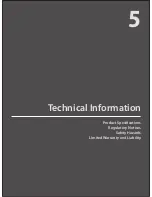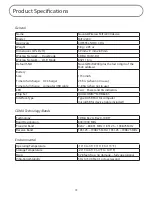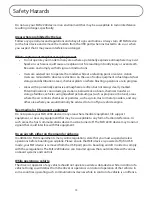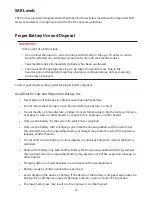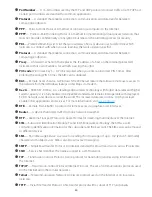
81
Glossary
●
3G
— Third Generation. 3G refers to the third generation of mobile telephony technology.
●
4G
— Fourth Generation. 4G refers to the fourth generation of mobile telephony technology.
●
802.11 (b, g, n)
— A set of WLAN communication standards in the 2.4, 3.6 and 5 GHz frequency bands.
●
Access Point
— A device that allows wireless communication devices to connect to a wireless network
using a standard such as Wi-Fi.
●
APN
— Access Point Name. The APN is an alphanumeric string that identifies the particular network
service that is being accessed. These are used by GPRS and UMTS networks.
●
bps
— bits per second. The rate of data flow.
●
Broadband
— High-capacity high-speed, transmission channel with a wider bandwidth than
conventional modem lines. Broadband channels can carry video, voice, and data simultaneously.
●
CDMA
— Code Division Multiple Access. It is the underlying channel access method used by some
mobile phone standards.
●
Computing Device —
Any of a variety of computer-like devices (for example, desktop computer,
laptop, tablet PC, smart phone, and PDA).
●
DHCP
— Dynamic Host Configuration Protocol. Software found in servers and routers that
automatically assigns temporary IP addresses to clients logging into an IP network.
●
DHCP Server
— A server or service with a server that assigns IP addresses.
●
DNS
— Domain Name System. A system for converting host names and domain names into IP
addresses on the Internet or on local networks that use the TCP/IP protocol.
●
EDGE
— Enhanced Data for GSM Environment or Enhanced Data rates for Global Evolution. A faster
version of GSM wireless service, it allows data to be delivered at rates of 384 Kbps and enables the
delivery of multimedia and other broadband applications. EDGE became available in 2001.
●
ESN
— Electronic Serial Number. A unique 32-bit number embedded in a wireless device that
identifies the device.
●
ExpressCard
— PCMCIA’s hardware standard for high-performance expansion of notebook computers.
Intended to replace the PC Card (formerly PCMCIA card) standard.
●
Firewall
— A hardware or software boundary that protects a network or single computer from
unwanted outside traffic.
●
Firmware
— A computer program embedded in an electronic device. Firmware usually contains
operating code for the device.
●
FTP
— File Transfer Protocol. A network protocol for exchanging files over a TCP network.
●
Gateway
— A network point that acts as an entrance to another network that uses a different
protocol.
●
GPRS
— General Packet Radio Services. A system used by GSM mobile phones for transmitting IP
packets. It also provides support for WCDMA based 3G networks.
Summary of Contents for MiFi2200
Page 1: ...2200 Intelligent Mobile Hotspot user product guide ...
Page 13: ...2 Using Your MiFi 2200 Using the MiFi 2200 for the First Time Connecting in Wi Fi Mode ...
Page 37: ...36 Wi Fi Log Click the Wi Fi Log button to view a listing of Wi Fi events most recent first ...
Page 79: ...6 Glossary Glossary ...


